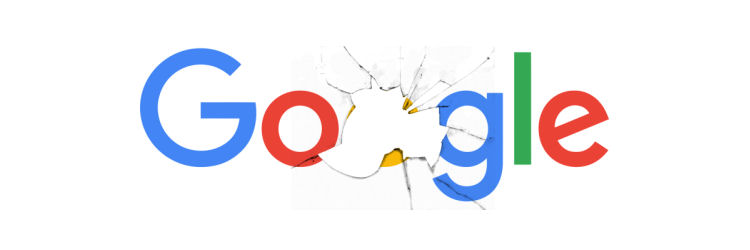How And When To Do A Competitive Analysis
In the first part of my short competition analysis guide, you will learn how to do good research for SEO analysis of competition and what it should consist of. Competitor analysis will allow you to predict changes in the market and notice the changing trends and strategies of your competitors faster than others.
A thorough examination of the competition and their marketing activities is something that every company should do before starting, and then update it on a regular basis. It is good to prepare a special document devoted to competition analysis, choose the criteria that interest you, and supplement it systematically. We can also start such research after several years of activity, but doing it at the start will bring us many more benefits and will allow us to avoid some mistakes.
There are different methods of analyzing the competition. The source of information about competitors can be both existing materials (published reports, statements, press articles – what is already there and what we can find e.g. on the web) and observational data (from observing advertising campaigns, analyzing the content of messages – that is, what we have to do ourselves and spend time on it). A more valuable source of knowledge about competitors usually turns out to be the observation and analysis of their actions – may be a bit more tedious, but effective.
How To Do A Competition Analysis
Determine what market you operate on and how you position yourself – for example, are you a footwear manufacturer, a manufacturer of safety footwear, or a manufacturer of protective equipment
- Make a list of competitors and brands that operate in the same market or satisfy the same needs
- Establish criteria areas of analysis that interest you
- Consider each brand on the list against all criteria
- Draw conclusions
- Repeat cyclically, e.g. every six months
Play Fair
Competition analysis should not be a tool for you to prey on weaknesses and take advantage of competition-restricting practices. Unfair competition and pursuit of the goal over the corpses may have a negative impact on your public opinion, which in turn may enter the warpath with you. We don’t want this! Make the goal of your competition analysis right, lest you make enemies along the way.
Product / Service
What you propose to your clients must meet their needs 100%, so when analyzing the competition, you need to get to know the products (or services) and prices that competing companies offer their clients. With such knowledge, you will be able to perfectly balance your offer so that its value for money is attractive to the buyer.
Customer service
Analyze how your competition communicates with customers. We live in the 21st century and there are many communication possibilities, here are a few of them:
- E-mail,
- Telephone,
- Live Chat,
- Messenger,
- Comments on posts,
- Video call,
Also, check what hours your customers prefer to contact your company. It is possible that your competition has set the bar high and made it possible to contact their company 24 hours a day. Find out how much your customers appreciate such a facility and, if necessary, give them a privilege as well.
Innovation
Competition analysis is a kind of monitoring that tracks the activities of other companies step by step every day. Such “monitoring” allows you to quickly catch the innovative ideas of your competitors to quickly use them in your activities. Chinese factories operate in a similar way, catching fashionable products at an express pace and creating their counterparts that you will not be able to distinguish from the original product at first glance.
I am not saying that you are supposed to be a Chinese counterfeit producer now. You have to be inspired by the pioneers in your market and follow a good example from them.
Feedback
Each of us is more or less concerned with how others judge us. There are few companies that make sure that their satisfied customers share their opinions on Facebook or in a Google listing, which is very relevant, mainly for local businesses. The analysis of the competitive environment should also focus on gathering knowledge about customer opinions – both good and bad.
Analysis of the company and its opinions will allow you to understand the customer and his view of the product or service, there are several important places on the Internet where you should look for opinions about your competitors:
- Internet forums,
- articles on news websites,
- thematic groups on Facebook,
- Influencer opinion,
- reviews in Google My Business (Google business card),
Brand24, which allows you to track the mention of any keyword on the Internet, can be a great way to catch opinions about your company or competitors. By setting a keyword that includes your company name, Brand24 will instantly browse the entire web for you in search of discussions about your business.
Remember that the opinions your customers leave on the internet have a huge impact on your business. Don’t let any of your unflattering opinions go unanswered.
Examples Of Competition
Prepare a template to record all of your data. Depending on the amount of competition on the market, make sure that there are at least 2-3 examples of large competitors who are icons in your industry. Then add at least 5 examples of competition that will be your direct competition. These can be companies from the immediate environment, from which it is worth following an example.
Examples of competition added to the template prepared for you will be a place which you should check regularly, and also supplement the table with new items from time to time.
Competition strategy
In order to learn the competition’s strategy, you need to gather information about where your competition is and what activities it is doing. A competitive strategy whose business is operating at full capacity will be a great source of inspiration for you and a determinant of how to act to find the best in your industry.
There are several key places to successfully acquire customers. Of course, it all depends on the service or product you offer. For the purposes of this material, I will present to you the 4 most important places that will allow you to fully understand the activities of your competitors on the Internet.
Facebook Company Analysis
There are close to 200 million people who use Facebook in the USA alone, so you are not surprised that it was in the first place. Almost every company that actively acquires customers sets up a fan page or business page. Most business owners set up a company profile on Facebook because everyone does.
Your competitor analysis should include at least 10 of the competitors that are in direct competition with you or maybe a source of inspiration.
Analysis Of The Competitive Environment On Facebook
Facebook is a powerful tool that allows business owners to not only share content on the board or in the stories section. Facebook also provides you with a powerful tool, which is an ad manager, which is used to broadcast paid ads on Facebook, Instagram, Messenger, and external websites (Audience Network).
Believe me, your competitors spend hundreds of thousands every day to reach their potential customers. Your competitor analysis should focus not only on what your competitors are sharing on the main dashboard but also on what your potential customers are making available in the form of paid advertising (Facebook Ads).
The Facebook ads library is a place where you can check what your competition is currently promoting. The ad library can be viewed by anyone, regardless of whether they have a Facebook account. Additionally, since March 2019, the ad library stored all data on social and political campaigns for up to 7 years. Be sure to visit the ad library to find out what content your competition is promoting using Facebook Ads advertising tools.
Another useful tool found on Facebook is the ability to see certain pages. Watch pages are where you can check the basic statistics of your competitors’ company profiles. Analysis of the competition in terms of engagement and the amount of content shared will allow you to determine the frequency of posted posts on your company profile.
You can find the “Pages to Follow” sections on your company business page by clicking on the “Insights” tab found under the column Manage Page. Once on the insights page scroll to the bottom and you will see a list of pages to monitor.

Competition analysis on Instagram
When doing competition research, remember that in some industries Instagram is the driving force of the business. When analyzing the competition, find not only the business account of the company on Instagram but also the account of the owner or employee who represents the company or often tells about it on his profile. From such online activities, you can learn a lot about what your competitors are planning and how.
Don’t just watch your competition. Healthy competition is most welcome. Comment on your competitors’ posts from time to time and build positive relationships with them.
Competition analysis on Linkedin
It is here that business relationships are most often created. Linkedin is undoubtedly a paradise for marketing and business enthusiasts, networkers, job seekers, and recruiters. It is here that business owners share their successes, and employees boast about their new job and promotion.
The analysis of the competition on Linkedin will mainly consist in observing the private accounts of the owners of competing companies. At the moment, company profiles do not play a major role as they do on Facebook.
On Linkedin, you can check who works in a competitive company, what positions are these people in, and what competencies they have. You can also meet new business partners here who will help you develop your business.
Website Analysis
The website is where I start my competition analysis. In most cases, websites contain links to social media channels. It allows me to save a lot of time, which I would have to spend on looking for a separate profile on Facebook, Instagram or Linkedin.
The analysis of the website will allow us to learn about the offer of your competitors and the prices they propose to their customers. With such information, you will create a better offer for your customers and save a lot of time on testing optimal solutions.
Website SEO AHREF Analysis
SEO analysis is a topic for more advanced people who would like to position their website in the Google search engine on their own. There are many tools that allow you to analyze your competition in terms of SEO.
Keyword analysis
A keyword analysis is the first step you need to take in competitor analysis. At this stage, you need to check exactly who is in the highest position on the phrases you have selected and what actions have been taken to achieve such an effect.
Until quite recently, positioning mainly consisted of building link tangle and competing who would collect more such links. At the moment, links are only some of the actions you need to do to position your website
What influences the position of the website:
- site security,
- page loading speed,
- website responsiveness on mobile devices,
- site age,
- high-quality content was written for SEO,
- user experience,
- Links referring to your website,
- social media,
- location.
How to check the keywords of the competition?
There are many keyword analysis tools – free and paid. Free keyword analysis can be done with the Google Keyword Planner. I also use a tool called Ubersuggest.
Content analysis
The next step you need to take is content analysis. Starting from the main page and ending with the company blog. Check which subpages generate the most hits to your competitors’ websites, then do the same, only twice as well. The effects will not come immediately, positioning the page for some keywords can be very time-consuming.
Inbound link analysis
Inbound link analysis is the stage in which you will learn about the places from which your competitors’ pages are linked. These can be sponsored articles, on industry websites, mentions on forums, or in comments under entries on other blogs and elsewhere on the Internet.
The value of incoming links depends mainly on the subject of the website and its authority (Domain Authority). Also, buying worthless links from wholesale suppliers can be a waste of money. Be sure to check where your competitors get links from and try to get a link to your website from these domains. Remember to only focus your attention on pages that are of value.
Inbound link analysis tools:
- AHREFS
- Moz
- Alexa
- Ubersuggest
Summary
As you can see, the competition analysis is not too complicated. If you’ve done enough to fill in the template document you prepared, you’ve taken a giant step forward.
By conducting a competition analysis, you have changed your view of the market in which your company is prospering. Knowing your competition will keep you on top and keep you in control of what’s happening in the industry.




